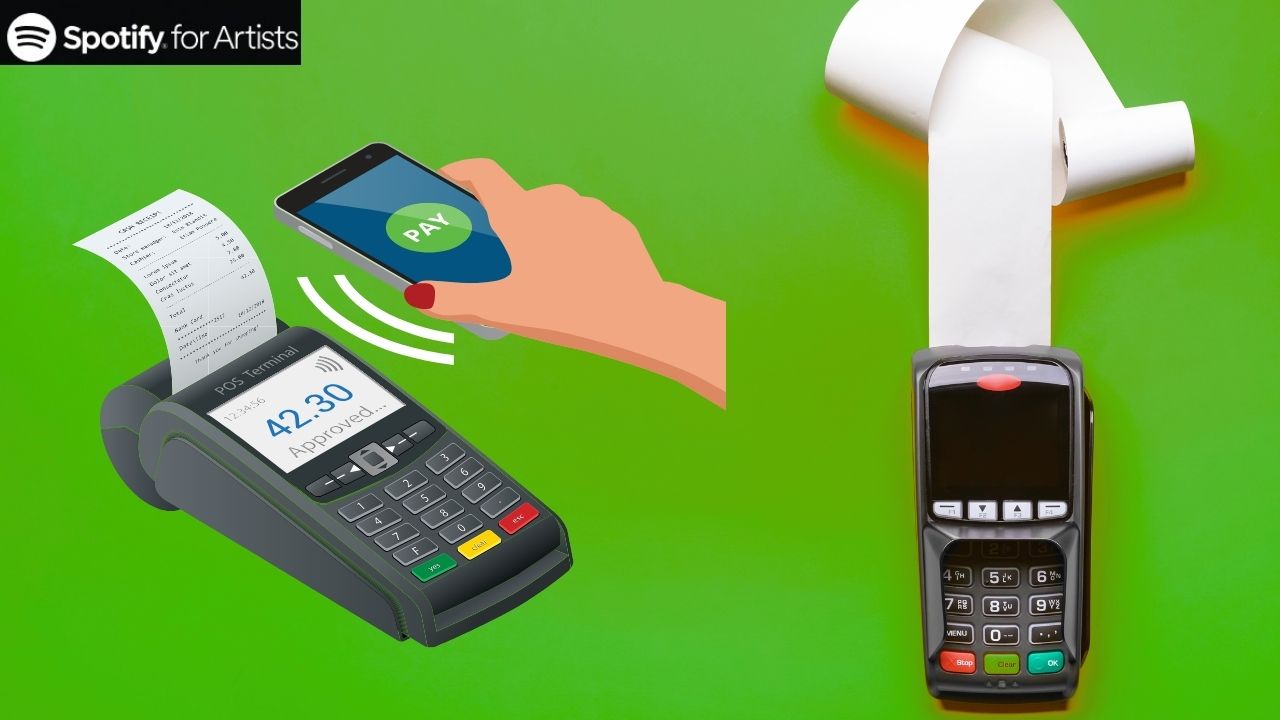Spotify has become a giant in the music streaming industry, offering a platform for artists to share their music with a global audience. However, understanding Spotify’s Payment System can be challenging for many. This blog aims to break down how artists are paid on Spotify, what factors influence these payments, and how the system works overall.
What is Spotify’s Payment System?
Spotify’s Payment System is a complex mechanism that involves several steps from the time a song is played to when the artist gets paid. It is designed to ensure that artists receive fair compensation for their work, although many feel that there is room for improvement.
How Does Spotify Pay Artists?
- Stream Count: Payments to artists on Spotify are primarily based on the number of times their songs are streamed. Each time a user listens to a song, it counts as a stream.
- Revenue Pool: Spotify collects all the revenue generated from ads and premium subscriptions into a pool.
- Pro-Rata Share: The total revenue pool is then distributed to artists based on their share of total streams. This means if an artist’s music accounts for 1% of all streams on Spotify, they receive 1% of the revenue pool.
- Payouts to Rights Holders: The revenue is paid to the rights holders, which can include record labels, distributors, and publishers, who then pay the artists.
Factors Affecting Spotify Payments
Several factors affect how much an artist earns from Spotify’s Payment System:
- Region of Stream: Streams from different countries contribute differently to the revenue pool. For example, streams from the US might be more valuable than those from other regions due to higher subscription rates and advertising revenue.
- Subscription Type: Premium users generally contribute more to the revenue pool than free users who listen to ads.
- Number of Streams: More streams mean a higher share of the revenue pool.
The Payout Mechanism Explained
Subscription Revenue and Ad Revenue
Spotify generates revenue through two main channels:
- Premium Subscriptions: Users pay a monthly fee for an ad-free experience and higher sound quality.
- Ad-Supported Streams: Free users listen to ads, and advertisers pay Spotify for these placements.
The revenue from both channels is combined to form the total revenue pool, which is then distributed to rights holders.
Pro-Rata Model
Spotify uses a pro-rata model to distribute the revenue. Here’s how it works:
- Calculate Total Streams: The total number of streams for all songs on Spotify in a given period is calculated.
- Artist’s Share of Streams: The number of streams for each artist is divided by the total number of streams to determine their share.
- Distribute Revenue: The artist’s share is then multiplied by the total revenue pool to determine their payout.
Distribution of Spotify Payments
Role of Record Labels and Distributors
For many artists, the payments from Spotify’s Payment System do not go directly into their bank accounts. Instead, the money is first paid to rights holders, which often include record labels, distributors, and publishers. These entities then distribute the earnings according to the agreements they have with the artists.
Independent Artists
Independent artists, who do not have record label backing, often use music distribution services to get their music on Spotify. These services take a cut of the earnings before passing the rest to the artists.
Spotify’s Payment System vs. Other Platforms
Comparison with Apple Music, Tidal, and YouTube
Spotify is not the only platform where artists can earn money from streaming. Here’s a brief comparison:
- Apple Music: Pays out a higher rate per stream compared to Spotify, as it does not have a free, ad-supported tier.
- Tidal: Known for higher per-stream payouts and a focus on high-quality audio.
- YouTube: Pays per view of music videos and has different revenue models including ad revenue and YouTube Premium subscriptions.
Each platform has its own pros and cons, and the choice of platform can significantly impact an artist’s revenue.
Challenges and Criticisms of Spotify’s Payment System
Low Per-Stream Payouts
One of the most significant criticisms of Spotify’s Payment System is the low per-stream payout. Artists often need millions of streams to make a substantial income, which can be challenging for independent and emerging artists.
Lack of Transparency
Many artists and industry professionals call for more transparency in how payments are calculated and distributed. They argue that the current system is complex and difficult to understand, making it hard for artists to know if they are being paid fairly.
Revenue Distribution
The distribution model, where a large share of the revenue goes to major labels and top artists, is another point of contention. This leaves independent artists with a smaller share of the revenue pool.
Spotify’s Defense
Spotify argues that it is committed to fair compensation for artists. The company has increased its revenue over the years and aims to provide more opportunities for artists to earn. Spotify also invests in tools and resources to help artists understand and maximize their earnings from the platform.
Improving Spotify’s Payment System
Direct Payment Models
Some suggest that Spotify should consider direct payment models, where listeners can pay directly to their favorite artists. This could ensure that more revenue goes to the artists themselves, rather than being distributed through multiple intermediaries.
User-Centric Payment System
Another proposed improvement is the user-centric payment model, where a user’s subscription fee is distributed only to the artists they listen to. This contrasts with the current pro-rata model and could potentially provide a fairer distribution of revenue.
Increased Transparency
Improving transparency around how payments are calculated and distributed could help build trust between Spotify and artists. Clearer contracts and regular audits could ensure that artists receive their fair share of the revenue.
Educational Resources
Spotify could invest more in educational resources for artists, explaining the payment system in clear and simple terms. This would help artists understand how they earn money and what they can do to increase their revenue.
Spotify’s Efforts to Support Artists
Spotify for Artists
Spotify has introduced several tools and features to help artists maximize their potential on the platform:
- Spotify for Artists: A dashboard that provides insights into streaming data, audience demographics, and playlist placements.
- Marquee: A promotional tool that allows artists to target their existing audience with new releases.
- Spotify Canvas: A feature that lets artists add short looping visuals to their tracks, enhancing the listening experience.
Partnerships and Initiatives
Spotify also partners with various organizations and initiatives to support artists, especially independent and emerging ones. These partnerships aim to provide artists with more opportunities to grow their careers and increase their earnings.
COVID-19 Relief
During the COVID-19 pandemic, Spotify launched the Spotify COVID-19 Music Relief project to support artists affected by the crisis. The initiative matched donations to various organizations providing relief to the music community.
Future of Spotify’s Payment System
Ongoing Improvements
Spotify continues to evolve its payment system, taking into account feedback from artists and industry professionals. The company is exploring new ways to distribute revenue more fairly and ensure that all artists have the opportunity to succeed on the platform.
Potential Changes
Possible future changes to Spotify’s Payment System include:
- Introduction of new payment models: Spotify may experiment with different payment models, such as user-centric payments or direct payments to artists.
- Enhanced artist support: More tools and resources to help artists understand and maximize their earnings.
- Greater transparency: Clearer explanations of how payments are calculated and distributed, along with regular audits to ensure fairness.
Impact on the Music Industry
Changes to Spotify’s Payment System could have a significant impact on the music industry as a whole. A fairer distribution of revenue could help more artists sustain their careers and continue creating music. This, in turn, could lead to a more diverse and vibrant music ecosystem.
Artist Feedback and Collaboration
Involving artists in the conversation about how to improve Spotify’s Payment System is crucial. Regular feedback sessions and collaborative efforts can help ensure that the system meets the needs of those it is designed to support.
Technology and Innovation
As technology continues to advance, Spotify can leverage innovations to improve its payment system. Blockchain technology, for instance, could provide more transparent and efficient ways to track and distribute royalties, ensuring that artists are paid accurately and promptly.
How Artists Can Maximize Their Earnings on Spotify
Optimize Your Profile
Making the most of Spotify’s Payment System starts with optimizing your artist profile. A well-crafted profile can attract more listeners and increase your streams. Ensure your bio is engaging, your photos are high-quality, and your social media links are up-to-date.
Release Music Consistently
Consistent releases keep your audience engaged and can lead to more streams over time. Plan your releases strategically and promote them across your social media channels to maximize visibility and engagement.
Engage with Your Audience
Building a strong connection with your audience can lead to increased loyalty and more streams. Use tools like Spotify for Artists to engage with your listeners, share playlists, and provide updates on your music journey.
Collaborate with Other Artists
Collaborations can introduce your music to new audiences. Partner with other artists to create unique tracks that can reach a wider listener base, increasing your overall streams and revenue from Spotify’s Payment System.
Utilize Playlists
Getting your music on popular playlists can significantly boost your streams. Submit your tracks to Spotify’s editorial playlists and encourage your fans to add your songs to their personal playlists. This can help you reach a larger audience and maximize your earnings.
Promote Your Music Outside Spotify
Promoting your music on social media, blogs, and other platforms can drive traffic to your Spotify profile. The more exposure you get outside Spotify, the more likely you are to increase your streams and revenue within the platform.
Leverage Spotify’s Tools
Spotify offers various tools to help artists maximize their potential:
- Spotify for Artists: Provides valuable insights into your audience and streaming data, helping you make informed decisions about your music career.
- Spotify Canvas: Allows you to add short looping visuals to your tracks, making them more engaging.
- Spotify Marquee: A paid promotional tool that targets your existing listeners with new releases.
Understanding Your Royalties
Types of Royalties on Spotify
Spotify generates different types of royalties for artists, including:
- Mechanical Royalties: Generated from the reproduction of music.
- Performance Royalties: Generated from the public performance of music.
- Streaming Royalties: Paid based on the number of streams.
How Royalties are Calculated
Royalties on Spotify’s Payment System are calculated based on several factors, including the number of streams, the region of the stream, and the type of user (premium or free). These royalties are then divided among the rights holders, which can include the artist, record label, publisher, and other parties involved in the creation of the music.
Royalties for Independent vs. Signed Artists
Independent artists typically receive a higher percentage of their royalties compared to signed artists, who often have to share their earnings with their record label and other intermediaries. However, independent artists also bear the full cost of production, marketing, and distribution, which can affect their overall profit.
Payment Frequency
Spotify pays royalties on a monthly basis, although the actual receipt of funds can vary depending on the terms set by the rights holders and distribution services. It’s important for artists to understand their contract terms and payment schedules to manage their finances effectively.
The Role of Data in Spotify’s Payment System
Importance of Streaming Data
Streaming data plays a crucial role in Spotify’s Payment System. Data analytics can provide insights into listener behavior, helping artists understand their audience and tailor their marketing strategies accordingly.
Using Data to Drive Growth
By analyzing streaming data, artists can identify which songs are performing well, which regions have the highest number of listeners, and how their audience demographics break down. This information can be used to plan tours, release new music, and engage with fans more effectively.
Transparency and Data Accuracy
Ensuring the accuracy of streaming data is essential for fair compensation. Spotify uses sophisticated algorithms to track and report streams, but artists should regularly review their data to ensure it aligns with their expectations and report any discrepancies.
The Future of Spotify’s Payment System
Technological Innovations
As technology continues to evolve, so too will Spotify’s Payment System. Innovations such as blockchain could potentially offer more transparent and efficient ways to manage and distribute royalties, ensuring artists are paid accurately and promptly.
Industry Trends
The music industry is constantly changing, and Spotify’s Payment System will need to adapt to these changes. This includes addressing the growing demand for higher artist payouts, improving transparency, and exploring new revenue models that benefit both artists and listeners.
Collaboration with Artists
Ongoing collaboration between Spotify and artists will be crucial for the future success of the platform. By working together, they can develop payment systems that are fair, transparent, and supportive of all artists, regardless of their size or popularity.
Addressing Criticisms
Spotify must continue to address the criticisms of its payment system. This includes increasing transparency, ensuring fair distribution of revenue, and finding ways to support emerging and independent artists. By doing so, Spotify can build a more equitable platform that benefits all stakeholders.
Conclusion
Spotify’s Payment System is a complex and evolving mechanism that plays a crucial role in the music industry. While it has provided artists with a valuable platform to share their music, there are significant challenges and criticisms that need to be addressed. By exploring alternative payment models, improving transparency, and leveraging technological innovations, Spotify can ensure a more equitable system that benefits all artists, big and small.
For artists, understanding how Spotify’s Payment System works and taking proactive steps to maximize their earnings is essential. By optimizing their profiles, releasing music consistently, engaging with their audience, and leveraging Spotify’s tools, artists can increase their streams and revenue. As the industry continues to evolve, staying informed and adaptable will be key to navigating the complexities of music streaming and ensuring long-term success.
For further reading, explore these related articles:
- Update Your Artist Pick: A Complete Guide
- How Spotify Works for Artists?
- Spotify for Artists Tools: A Comprehensive Guide
For additional resources on music marketing and distribution, visit Deliver My Tune.






